- Home
- Peter Ackroyd
London Page 5
London Read online
Page 5
London began to grow and flourish. A greater forum, and a greater basilica, were built upon the same site in the late first century; the basilica itself was larger than St. Paul’s, Wren’s seventeenth-century cathedral on Ludgate Hill. A great fort was built to the north-west, where the Barbican now stands. There were public baths, and temples, and shops, and stalls; there was an amphitheatre where the Guildhall now rests, and just south of St. Paul’s a racing arena: by the strange alchemy of the city a name, Knightrider Street, has survived for almost two thousand years.
We can find evidence of further survival in the line, if not the name, of other streets. At the corner of Ironmonger Lane and Prudent Passage, traces of a Roman road passing from east to west have been uncovered together with the alignment of structures against it; at least seven successive buildings, all apparently engaged in the same kind of industrial activity, were erected upon that same alignment. There was an interval of destruction caused by fire, and then a gap of some five hundred years, until new buildings were erected upon the base of the old Roman road in the early ninth century. By the twelfth century, when the name of Ironmonger Lane enters recorded history, the buildings still followed the northern edge of the street laid out more than a thousand years before. The same buildings were in use until the seventeenth century, providing evidence of perhaps unequalled continuity in the life of the city.
We can cite many of the ancient streets in this vicinity—Milk Street, Wood Street, Aldermanbury among them—as the visible remnants of a Roman street horizon. It is suggestive, also, that the great markets of London at Cheapside and East Cheap lay until recent years on the thoroughfares established by the Romans on their first arrival. In the space of fifty years, by the end of the first century, London had acquired its destiny. It became the administrative and political capital of the country as well as its trading centre. The focus of communication and commercial activity, it was governed by imperial laws concerning trade, marriage and defence, laws that survived the passing of the Romans themselves. It was in all essentials a city-state with its own independent government, albeit in direct relationship to Rome; that independence, and autonomy, will be found to mark much of its subsequent history.
During the strongest period of its growth, at the end of the first century, the city would have possessed some thirty thousand inhabitants. There were soldiers, and merchants, and businessmen, artisans and artists, Celts and Romans, all mingled together. There were grand houses for the wealthier merchants and administrators, but the standard house of most Londoners was a form of cubicle or bed-sitting-room, its walls painted or decorated with mosaic. Sometimes, we can even hear the people speak.
There are surviving letters dealing with matters of finance and of trade, as might be expected, but there are also less formal communications. “Primus has made ten tiles. Enough! … Austalis has been taking off on his own every day for the last fortnight … for shame! … London, next door to the temple of Isis … Clementinus fashioned this tile.” These are the earliest known words of a Londoner, scratched upon pieces of tile or pottery and fortuitously preserved among all the ruins that have been heaped over the city’s earth. More pious memorials have also been found, with inscriptions for the dead and invocations to the gods. The stamps for the labels of an optician have been uncovered, proffering remedies for running eyes, for inflammation and for dim sight.
Our own sight of the past may be cleared a little if we are able to reconstruct the scattered evidence of the remains. A great hand of bronze, thirteen inches long, was found beneath Thames Street; a head of the Emperor Hadrian, again more than life-size, in the waters of the Thames itself. So we may imagine a city adorned with great statues. Fragments of a triumphal arch have been recovered, together with stone frescoes of goddesses and gods. This is a city of temples and monumental architecture. There were public baths also, and one lay in North Audley Street quite a long way outside the City. When workmen of the late nineteenth century discovered it in an underground arched chamber, it was still half-filled with water. Votive statues and daggers, sacred urns and silver ingots, swords and coins and altars, all express the spirit of a city in which trade and violence were not divorced from a genuine religious spirit. But there is significance, also, in the smallest detail. More than a hundred styli have been found at the bottom of the Walbrook River, where countless busy clerks simply threw used pens out of the window. It is an image of bustling life which would not be inappropriate in any period of London’s history.
Yet the security and prosperity of London are not at this early date so certain. Like an organic being London grew and developed outwards, always seeking to incorporate new territory, but it also suffered periods of weariness and enervation when the spirit of the place hid its head. We may find tokens of just such a change by those same eastern banks of the Walbrook where the clerks of the empire tossed their pens into the water. Here was discovered, in 1954, the remains of a temple devoted to Mithras and subsequently to other pagan deities. It was not uncommon for Roman Londoners to embrace a variety of faiths; there is good evidence, for example, that the beliefs of the original Celtic tribes were incorporated into a peculiar Romano-Celtic form of worship. But the Mithraic mystery cult, with its rites of initiation and the secrets of its arcane ritual, seems at least in theory to presage a more disturbed and anxious city.
The most resourceful period of Roman London lay in the years spanning the first and second centuries, but these were followed by an uneven period combining development and decline. That decline was in part associated with the two great titular spirits of London, fire and plague, but there was also a steady alteration of imperial rule as the empire itself weakened and decayed. In approximately AD 200, some fifty years before the temple of Mithras was erected, the great wall was constructed around London. It speaks of an age of anxiety, but the very fact of its erection suggests that the city still had formidable resources of its own. Large areas within the wall were unoccupied, or used for pasture, but there were fine temples and houses in the more fashionable district close to the river. The first London mint was established in the third century, testifying once again to the city’s true nature. In that century, too, a riverine wall was constructed to complete the city’s defences.
What, then, was the nature and activity of the citizens themselves in the last decades of Roman London? They would be largely of Romano-British descent, and there were occasions when they were ruled by a British “king.” But London has from its inception always been a mixed city, and the streets would have been filled with the inhabitants of many nations including the native Celtic tribes who, over three hundred years, had naturally grown accustomed to the new order. This Roman city spanned a period as long as that from the late Tudors to the present day, but we have in general only the silent evidence of scattered cups and dice, bath scrapers and bells, writing tablets and millstones, brooches and sandals. How can we make these objects live again?
There were of course, in the passages of this long history, periods of turbulence and warfare. Many have gone unrecorded, but one or two powerful incidents survive. The darkness breaks and a scene presents itself, frozen for a moment, throwing into further confusion and mystery the historical process of which it is a part. A Roman leader named Allectus sailed to Britain in order to put down a local rebellion; having defeated the rebels he set up his headquarters in London. A Celtic chieftain, Asclepiodotus, in turn marched against the imperial victor; outside the city there was a great battle in which the British were successful. The remaining Roman troops, fearing massacre, fled within the walls and closed the gates. Siege engines were brought, and a breach was made in the defences; the Celts poured in and the leader of the last legion begged for mercy. It was agreed that the Romans could withdraw and take to their ships but one tribe or group of tribesmen reneged on the agreement: they fell upon the Roman soldiers, decapitated them in ritual Celtic style and, according to the narrative of Geoffrey of Monmouth, threw their heads into “a brook
in the city … in Saxon, Galobroc.” Many skulls were, in the 1860s, found in the bed of the long-buried Walbrook River. The rest is silence.
But we cannot from the evidence of this single anecdote assume that the history of London is one of warring tribes against a common Roman enemy. All the evidence suggests otherwise and instead intimates a degree of mingling, maintained by mutual trade, that encouraged an almost unbroken continuity of commerce and administration. There would by now be something of a London type, perhaps with that particular “muddy” complexion which became characteristic in later years. No doubt the citizens spoke a Latin patois which included native elements, and their religious beliefs would have been equally mixed and idiosyncratic. The Mithraic temple is only one example of a mystery religion—predominantly the reserve of merchants and professional administrators—but the Christian faith was not unknown. In AD 313 a certain Restitus attended the Council of Arles in his capacity as Bishop of London.
The city’s economic activity was equally mixed and practical; the commercial and military quarters were still in active operation, but the archaeological evidence suggests that many public buildings were allowed to fall into disuse and earth was laid over once inhabited sites for the purposes of farming. It may seem odd to have farms and vineyards within the walls of the city but, even as late as the time of Henry II, half of London was open ground with fields, orchards and gardens adorning it. There is also evidence, in the third and fourth centuries, of quite large stone buildings which were conceivably farm-houses. We might then have the paradox of rural landowners within the city itself. Certainly the city was still formidable enough to withstand the attentions of marauding tribes; in AD 368 the Attacotti laid waste to much of Kent without daring to make an onslaught upon London itself.
But in 410 Rome withdrew its protecting hand; like the hand found beneath Thames Street, it was of bronze rather than of gold. There are reports of raids against the city by Angles and Saxons, but there is no record of any great collapse or transition. There is, however, some evidence of decay. There was once a bath-house in Lower Thames Street which, in the early fifth century, was abandoned. The glass was shattered, and the wind destroyed the roof; then at a later date, after the collapse of the roof, the walls of the eastern range of buildings were systematically demolished. Found among the debris was a Saxon brooch, dropped by a woman while clambering over these alien ruins.
The arrival of the Saxons has been dated to the beginning of the fifth century when, according to the historian Gildas, the land of Britain was licked by a “red and savage tongue.” Within certain cities “in the midst of the streets lay the tops of lofty towers, tumbled to the ground, stones of high walls, holy altars, fragments of human bodies.” But in fact the Angles and the Saxons were already living in the London region, and it is clear from the archaeological evidence that by the late fourth century troops of Germanic origin were guarding London as legionnaires under the imperial banner.
It was once assumed, however, that the arrival of the Saxons resulted in the destruction and desertion of the city itself. In fact there was no fiery carnage in the London area from which Rome retreated. On several sites has been found a layer of “dark earth” which was believed to indicate dereliction and decay, but contemporary experts have suggested that levels of dark soil may point to occupation rather than destruction. There is other evidence of the continuous habitation of London during that period once known as the “dark ages.” In one of those extraordinary instances of historical survival, it has been shown that the provisions of London law in the Roman period— particularly in terms of testamentary provisions and property rights—were still being applied throughout the medieval period. There was, in other words, a continuous administrative tradition which no Saxon occupation had interrupted.
The old chronicles assert that London remained the principal city and stronghold of the Britons. In the histories of Nennius and Gildas, Geoffrey of Monmouth and Bede, it is regularly cited as an independent town which is also the home of the British kings; it is the place where sovereigns were made and acclaimed, and it is the site where the citizens were called together in public assembly. It is also the chief place of defence when, on various occasions, the Britons fled within the safety of the walls. It is the seat of the British and Roman nobility, as well as representing one of the great sees of the Christian realm. The ancient British kings—Vortigern, Vortimer and Uther among them—are depicted as reigning and living in London.
Yet in these early chronicles the distance between factual interpretation and fanciful reconstruction is short. In these accounts, for example, Merlin makes many prophecies concerning the future of the city. Another great figure who exists somewhere within the interstices of myth and history is also to be found in London: King Arthur. According to Matthew of Westminster, Arthur was crowned by the archbishop of London. Layamon adds that he entered London after his investiture. The mark of this urban civilisation was its sophistication; Geoffrey of Monmouth, for example, celebrates the affluence and courtesy of Arthur’s subjects as well as the “richness” of decorative art everywhere apparent. In Malory’s great prose epic, derived from several original sources, known as Le Morte d’Arthur, there are many references to London as the principal city of the realm. At a time of foreboding after the death of Uther Pendragon, “Merlyn wente to the Archebisshop of Caunterbury and counceilled hym for to sende for all the lordes of the reame and alle the gentilmen of armes that they shold to London come” and gather “in the grettest chirch of London—whether it were Powlis or not the Frensshe booke maketh no mencyon.” In later books the Feir Maiden of Astolat is laid beside the Thames, Sir Launcelot rides from Westminster to Lambeth across the same river, and Guenevere “cam to London” and “toke the Towre of London.”
The less controversial documents of historians and chroniclers add detail to this picture of legendary munificence. Ecclesiastical records reveal that a synod was held, either in London or Verulamium, in 429; since the assembly was called to denounce the heresies of a British monk, Pelagius, it is clear that there was still a thriving religious culture in the regions bordering upon London.
Some twelve years later, according to a contemporaneous chronicle, the provinces of Britain accepted Saxon domination. Although that source is silent on the fate of London, it seems to have retained its independence as a city-state. By the middle of the sixth century, however, the city can be assumed to have accepted Saxon rule. Large parts of the walled area were employed as pasture, and the great public buildings were no doubt used as marketplaces, or stockades for cattle, or as open spaces for the wooden houses and shops of a population living among the monumental ruins of what was already a distant age. There is a wonderful Saxon poem on the material remnants of just such a British city; they are enta geweorc, the “works of giants,” the shattered memorials to a great race which passed away hund cnect—a hundred generations ago. In the description of broken towers and empty halls, of fallen roofs and deserted bath-houses, there is a combination of sorrow and wonder. There are intimations here, also, of another truth. The stone fabric of this ancient city has been dissolved by wyrde or “destiny,” and age; it has not been violently attacked or pillaged by marauders. The Saxons were not necessarily destroyers, therefore, and this poem displays a genuine reverence for antiquity and for a beohrtan burg, “bright city,” where heroes once dwelled.
We can infer, in turn, the lineaments of Saxon London. A cathedral church was built here, and the palace of the king was maintained on a site now claimed by Wood Street and Aldermanbury. Seventh-century records mention a “king’s hall” in London, and two centuries later it was still known as “that illustrious place and royal city”; the location of the royal palace beside the old Roman fort in the north-west of the city suggests that its fortifications had also been maintained. But there is even more striking evidence of continuity. One of the most important archaeological discoveries of recent years has been that of a Roman amphitheatre upon the site
of the present Guildhall; this is exactly the location where the Saxons were known to hold their folkmoots, in an area always specified as being to the north-east of the cathedral. It seems certain, therefore, that the Saxon citizens used the ancient Roman amphitheatre for their own deliberations; it throws a suggestive and curious light upon their relationship to a remote past, that they should sit and argue upon stone rows erected more than two centuries before. It is no less suggestive, of course, that the modern Guildhall is erected upon the same site. There is evidence, at the least, for administrative permanence. It seems very likely, in turn, that the great walled city was known as the centre of authority and of power.
This would help to explain the location of the thriving Saxon town, Lundenwic—wic meaning “marketplace”—in the area now known as Covent Garden. A typical Saxon community, in other words, had grown up just beyond the walls of the powerful city.
We may imagine several hundred people, living and working in an area from Covent Garden to the Thames. Their kilns and pottery have lately been found, together with dress pins and glass beakers, combs, stone tools and weights for their looms. A butchery site has been excavated in Exeter Street, off the Strand, and farm buildings in Trafalgar Square. All the evidence suggests that a flourishing commercial area was, therefore, surrounded by small settlements of farmers and labourers. The names and sites of Saxon villages are still to be heard within the districts of a much greater London, Kensington, Paddington, Islington, Fulham, Lambeth and Stepney among them. The very shape and irregular street line of Park Lane are determined by the old acre strips of the Saxon farmers. Long Acre, too, reflects that pastoral tradition. It was an extended community, therefore, and it may have been of Lundenwic—rather than of London—that Bede spoke when he described it as situated “on the banks of the Thames … a trading centre for many nations who visit it by land and sea.”

 The Clerkenwell Tales
The Clerkenwell Tales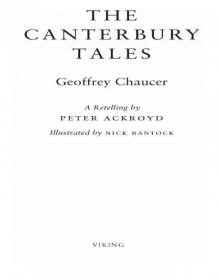 The Canterbury Tales
The Canterbury Tales J. M. W. Turner
J. M. W. Turner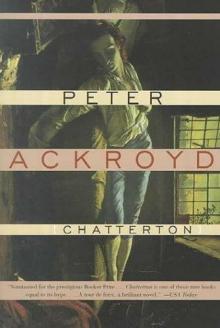 Chatterton
Chatterton The Canterbury Tales – A Retelling
The Canterbury Tales – A Retelling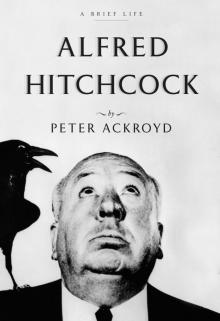 Alfred Hitchcock
Alfred Hitchcock Three Brothers
Three Brothers Wilkie Collins
Wilkie Collins Venice
Venice Poe
Poe The Lambs of London
The Lambs of London London
London Queer City
Queer City Revolution, a History of England, Volume 4
Revolution, a History of England, Volume 4 Venice: Pure City
Venice: Pure City Foundation
Foundation Thames
Thames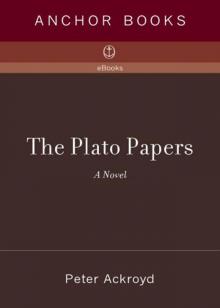 The Plato Papers
The Plato Papers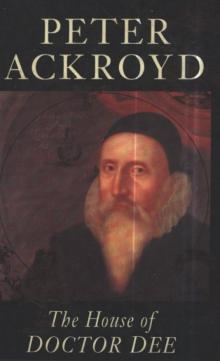 The house of Doctor Dee
The house of Doctor Dee Rebellion: The History of England from James I to the Glorious Revolution
Rebellion: The History of England from James I to the Glorious Revolution Albion: The Origins of the English Imagination
Albion: The Origins of the English Imagination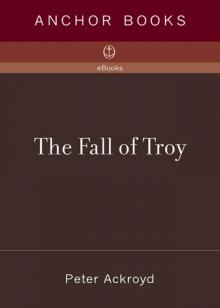 The Fall of Troy
The Fall of Troy The Death of King Arthur
The Death of King Arthur The Trial of Elizabeth Cree
The Trial of Elizabeth Cree London: The Biography
London: The Biography The Casebook of Victor Frankenstein
The Casebook of Victor Frankenstein Hawksmoor
Hawksmoor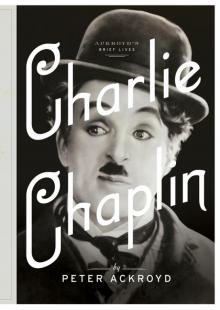 Charlie Chaplin
Charlie Chaplin London Under
London Under